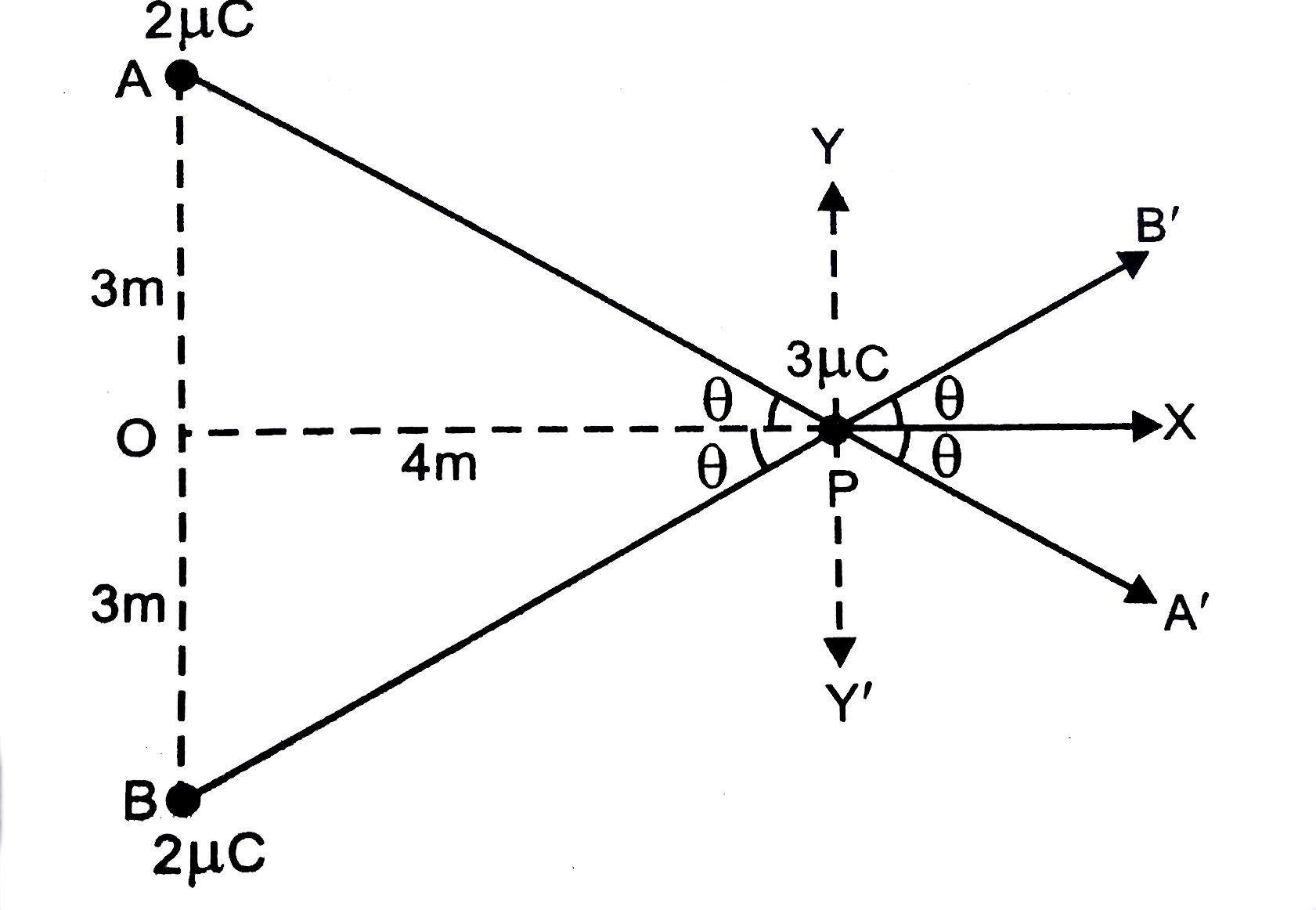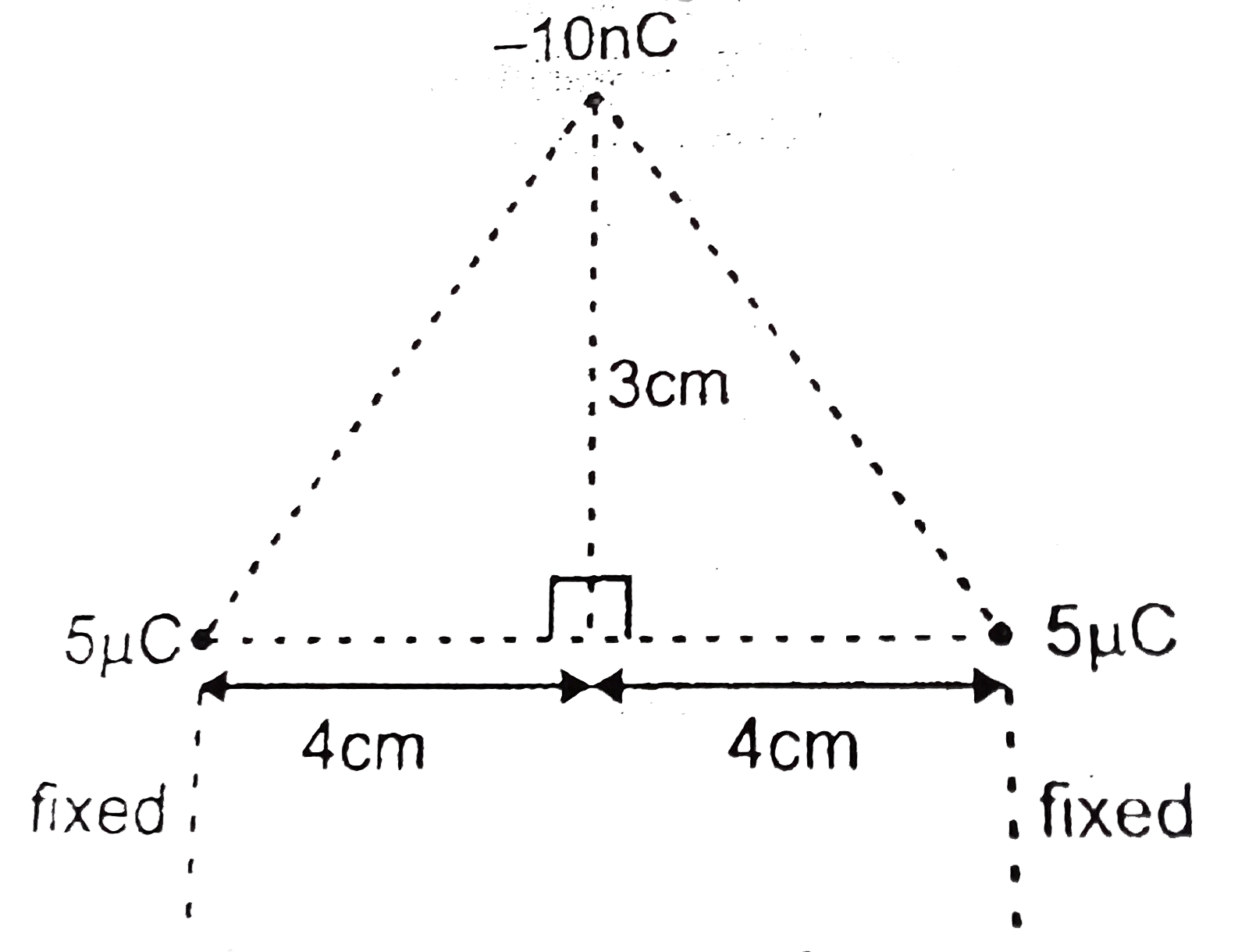Two equal positive charges, each of 2μC interact with a third positive charge of 3μC situated as shown in Fig. Calculate the magnitude and direction of the force on the 3μC charge.

In fig ,
OA=OB=3m,OP=4m
∴AP=BP=√32+42=5m
According to Coulomb's law,
Force on charge at P due to charge at A
F1=14π∈0q1q2(AP)2
F1=9×109×(2×10−6)×(3×10−6)52
=5425×10−3N=2.16×10−3N
F1=2.16XX10−3N, along PA' opposite to PA. It has two recentangular components F2cos0 along PX and F1 sin 0 along PY'. Similarly, force on charge along PB opposite to PB'. It also has two recentangular components :F2cos0 along PX and F2sin0 along PY.
The components along PY' cancel. The components along PX add up.
Total force on 3μC charge is F=2F1cosθ
=2×2.16×10×10−3×45
=3.5×10−3N, along PX.
Similar Questions
Two identical charges of 1μC are kept on 0,2 m) and (0,-2 m), respectively. Calculate the magnitude of the force acting on a 2μC charge placed at (-5m,0).
View SolutionThree Charges of magnitude 100μC are placed at the corners A, Band C ofan equilateral triangle of side 4m. If the charge at A and Care positive and the one at point B is negative, what is the magnitude and direction of total force acting on charge at C? [5.625N]
View Solution
Knowledge Check
Two charges each of 1μC are at 3 cm. Then the force between them is
A100 NB10 NC104 dyneD1000 N
Figure shows two fixed positive point charges of magnitude 5μC A negative point charge of −10nC and mass 1kg is released as shown in figure (consider only electrostatic foces)AInitial acceleration fo −10nC charge is 0.216m/s2Binitial acceleration of −10nC charge is 2.16m/s2CKinetic energy of −10nC charge when it crosses the line joining two fixed charges is 4.5 mJDKinetic energy of −10nC charge when it crosses the line joining two fixed charges is 3 mJ.
Two positive point charges of 0.2μCand0.01μC are placed 10 cm apart. Calculate the work done in reducing the distance to 5 cm.
View SolutionAn electric field of 105N/C points due west at a certain spot. What are the magnitude and direction of the force that acts on a charge of +2μCand−5μC at this spot?
View SolutionTwo positive point charges 15μC and 10μC are 30 cm apart. Calculate the work done in bringing them closer to each other by 15 cm.
View SolutionA negative charge of magnitude 2 μC is moving with a speed of 3×106m/s along the positive Y-axis . A magnetic field →B=(0.5ˆi−0.4ˆk) T acts in the space.
What is the magnitude and direction of force on the given charge ?
View SolutionArrange three point charges 2μC,4μC and 1μC on a straight line segment of 1 m such that net force experienced by the 1μC charge is zero
View SolutionTwo positive charges which are 0.1m apart repel each other with a force of 18N. If the sum of the charges be 9μC, calculate their separate values.
View Solution
